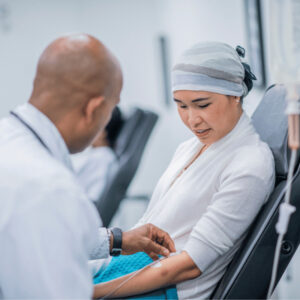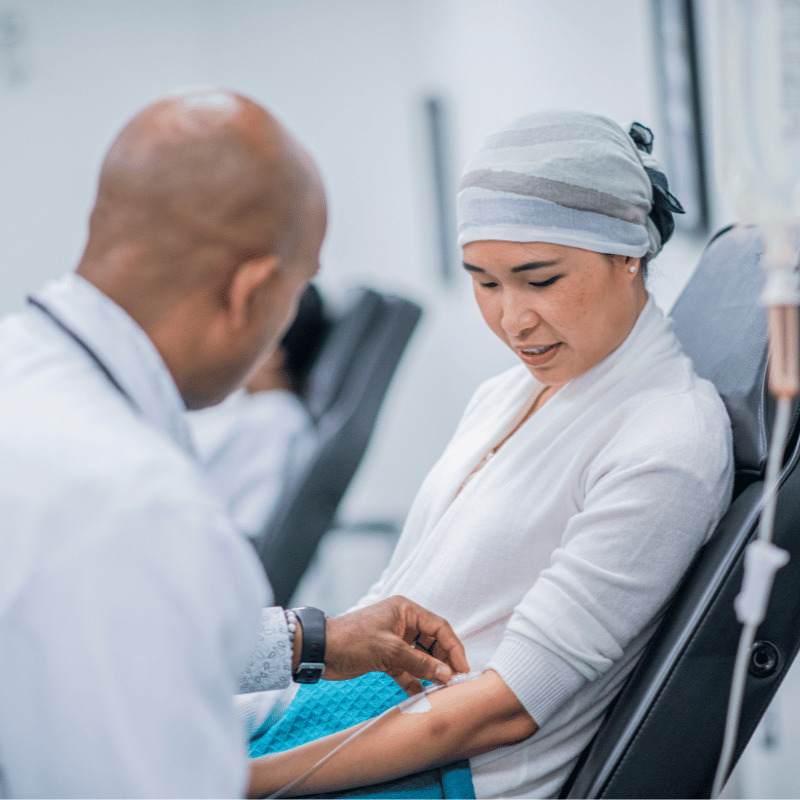Worse Outcomes for Myeloma Patients in Real-World Results vs. Clinical Trials
Multiple myeloma patient outcomes are strikingly different in the real-world versus controlled environments according to data presented at the ASH Conference 2023 (Abstract 541). In the real world, multiple myeloma patients demonstrated a 44% reduction in progression-free survival (PFS) and a 75% decrease in overall survival (OS) compared to participants in clinical trials.

The study titled “Comparison of the Efficacy in Clinical Trials Versus Effectiveness in the Real-World of Treatments for Multiple Myeloma: A Population-Based Cohort Study” explores the gap between clinical trial efficacy and real-world effectiveness of treatments for multiple myeloma.
Conducted by a team led by Dr. Alissa Visram, the research focused on assessing the outcomes of patients treated with standard-of-care multiple myeloma regimens in routine practice compared to those in registration phase III randomized controlled trials (RCTs).
Key Findings:
- Efficacy-Effectiveness Gap: Real-world (RW) patients experienced a 44% worse progression-free survival (PFS) and a 75% worse overall survival (OS) compared to RCT patients across various multiple myeloma regimens.
- Patient Characteristics: RW patients were generally older, and for relapsed regimens, there was a longer time between multiple myeloma diagnosis and the start of the regimen in the real-world compared to RCTs.
- Regimen Performance: Most multiple myeloma regimens evaluated showed worse PFS and OS in the real-world setting, except for pomalidomide/dex (Pd), which demonstrated a trend towards better performance.
- Safety Profile: The safety profile, measured by inpatient hospitalization rates during treatment, was comparable between the real-world cohort and reported serious adverse events (AEs) in RCTs.
Implications: The study emphasizes the significant efficacy-effectiveness gap between registration RCTs and real-world usage of multiple myeloma regimens. The findings underscore the importance of ongoing evaluation of real-world data to inform clinicians and patients for shared treatment decision-making.
Find out more
This link will take you to an external site
Patient Stories by Multiple Myeloma Type
Explore our multiple myeloma stories below, where patients describe things like:
- First myeloma symptoms
- What treatments they underwent
- Living with multiple myeloma
Active myeloma
Clay D., Relapsed/Refractory Multiple Myeloma
Symptoms: Persistent kidney issues, nausea
Treatments: Chemotherapy (CyBorD, KRd, VDPace), radiation, stem cell transplant (autologous & allogeneic), targeted therapy (daratumumab), immunotherapy (elotuzumab)
...
Melissa V., Multiple Myeloma, Stage 3
Symptom: Frequent infections
Treatments: IVF treatment & chemotherapy (RVD) for 7 rounds
...
Elise D., Refractory Multiple Myeloma
Symptoms: Lower back pain, fractured sacrum
Treatments: CyBorD, Clinical trial of Xpovio (selinexor)+ Kyprolis (carfilzomib) + dexamethasone
...
Marti P., Multiple Myeloma, Stage 3
Symptoms: Dizziness, confusion, fatigue, vomiting, hives
Treatments: Chemotherapy (bortezomib & velcade), daratumumab/Darzalex, lenalidomide, revlimid, & stem cell transplant
...
Ray H., Multiple Myeloma, Stage 3
Symptoms: Hemorrhoids, low red blood cell count
Treatments: Immunotherapy, chemotherapy, stem cell transplant
...
Typical myeloma
The majority of people diagnosed with myeloma fall under this category:
- IgG k (kappa)
- IgG λ (lambda)
- IgA k (kappa)
- IgA λ (lambda)
Tim H., Multiple Myeloma
Symptoms: None that could be identified; cancer found through CT scan for gallbladder removal
Treatments: Chemotherapy, stem cell transplant
Scott C., Refractory Multiple Myeloma, Stage 3
Symptoms: Pain in hips and ribs, night sweats, weight loss, nausea
Treatments: Clinical trial, chemo, kyphoplasty, stem cell transplant
Jude A., Multiple Myeloma, Stage 3
Symptoms: Pain in back, hips and ribs; difficulty walking
Treatments: Bilateral femoral osteotomy, reversal due to infection; chemotherapy
Light chain myeloma
It’s estimated that light chain myeloma makes up about 15% of all myeloma diagnoses. There are times when malignant plasma cells produce only the light chain component of the antibody. Patients diagnosed with these cases have what’s known as “light chain myeloma.”
Carlos C.
Diagnosis: Multiple myeloma, Light Chain, Stage 2
1st Symptoms: Back pain and spasms
Treatment: Back surgery to fuse T1 and T2, chemotherapy (RVD) and stem cell transplant
Non-secretory myeloma
Beth A.
Diagnosis: Multiple myeloma, relapsed/refractory
Subtype: Non-secretory (1-5% of myelomas)
1st Symptoms: Extreme pain between shoulder blades, sternum, head, burning sensation
1st Line Treatment: VAD chemo, radiation, stem cell transplant
RR Treatment: 8 chemo regimens, successful combo→selinexor+bortezomib+dexamethasone
Inactive myeloma
Smoldering myeloma
Maui B., Smoldering Myeloma
Symptoms: Inflammatory eye disease, uterine bleeding
Treatment: Watch and wait; routine biopsies ands scans
...
Brad H., Smoldering High-Risk Multiple Myeloma
Symptoms: Abnormal kidney function (stage 2 kidney disease), mild anemia
Treatments: To be started at the time of interview
...
Yolanda B., Multiple Myeloma
Symptoms: Anemia, unusual craving for starchy food, ‘clicking’ sound produced by knees under certain circumstances (such as when walking up stairs)
Treatments: Radiation, chemotherapy, targeted therapy
...













